Mammals are always thought of giving birth to young ones but sometimes it can be different too. Can you ever think of mammals laying eggs instead of giving birth to babies?
Yes, there are egg laying mammals and they are known as monotremes. They are named so because of the presence of single cloacal opening in their bodies that serves as a passage for eggs or sperms, feces and urine. The tracts for urine, feces and sperms come straight to this cloaca and therefore these creatures are named as monotremes, meaning "one hole". All the members of the egg laying mammals list share some basic characteristics with one another.
Number of Species
As suggested by egg laying mammal facts, only five species of monotremes are extant, one of which is duck billed platypus and remaining four belong to the echidna family. These echidnas are also called as spiny anteaters because they like to have ants and termites in their diet. Also, due to their pointing spines, they are called spiny anteaters. They are quite similar with other mammals in few things, but differ in most of the characteristics. Sometimes, they behave like reptiles, while at other times; they show the characteristics of birds.
Natural Habitat
These monotremes are, primarily, found in Australia, Tasmania and New Guinea. The duck-billed platypus is purely aquatic while the echidnas are land-dwelling animals. The echidnas can easily be found in regions having moderate temperature like forests, hilly areas, high mountains, desserts, green lands and so on. Just like platypuses, the echidnas do not have teeth, and they remain active both during the day and the night time.
Reproduction in Echidna
A female echidna possesses a pouch in the body where she lays an egg and it takes almost 10 days for the egg to hatch. After hatching, a very small sized baby echidna comes out of the egg. The baby is so small that it needs to spend three more months with mother in the pouch, and it is one of the prominent egg laying mammals facts. Their mother feeds them with the breast milk. Since female echidna does not have nipples, it is a little problematic for the baby to suck milk. The echidnas like to live alone except during the breeding season.
Reproduction in Platypus
Coming towards the reproduction side of platypus, female lays a couple of eggs in a hole that is especially dug for this purpose. All the platypuses are found in and around water because they mainly feed on the marine insects, their larvae and other small organisms. Male platypus becomes more active at the time of breeding as compared to normal days. Feeling any kind of danger during breeding season, they release poison for killing attackers to save the female platypus from any sort of harm. It takes almost a month for the female platypus to get pregnant.
Fun Facts about Echidna
- Though many people may get scared from these spiny creatures, they themselves are, basically, very introvert and fearful.
- When feeling scared, they fold their legs into the body and assume a ball like shape.
- In the folded position, they cannot see anything, and think that nobody is watching them, which is one of the funny and interesting facts about echidna.
- If an echidna is on the ground, it tries to dig a hole and hide itself in it.
Fun Facts about Platypus
- Introduced in 1798 in Europe, the animals have several features like those of reptiles and birds.
- It possesses a bill just like ducks have beaks, and they also have feet.
- They also have a tail like that of beavers.
- The platypus uses its tail to swim in water and search for food, which includes various insects and fishes.
- Platypuses are pretty poisonous as well and they use this poison to protect themselves against the attackers.
- According to an estimate, the amount of poison released by a platypus is more than enough to kill a dog.
- An interesting fact about platypus is that their fur makes them waterproof, isn’t it amazing?
- They have smaller eyes and do not use them under water.
- Platypuses have no teeth and, that is why, their food is crushed by several plates in their mouth.
Differences between Platypus and Echidna
Though the echidnas and platypuses share similarities as they both are monotremes, but there do exist certain differences between them. A female platypus lays eggs in the special holes or burrows while a female echidna, on the other hand, lays egg in her pouch. Female platypus can lay two eggs at a time while an echidna can lay only one egg at a time. There are many other differences in their body structure, feeding habits, diet and so on.
Do you know about any other egg laying mammal? If yes, then let us know so that we can add in our list of Egg laying Mammals.
Latest Mammals
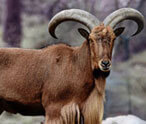
Types Of Goats
Goat is a mammal that belongs... read more
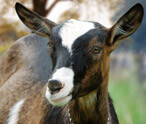
Goat Facts
A domesticated form the wild goat of...read more
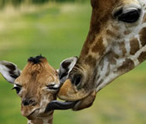
Giraffes Facts
Giraffes are creatures with extremely...read more
Latest Birds
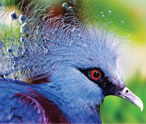
Victoria Crowned Pigeon
With its name...read more
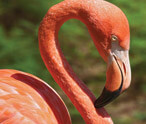
Information About Flamingos
Flamingos are...read more
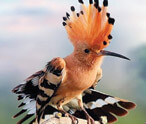
Hoopoe Bird
Famous for its distinctive crown of...read more
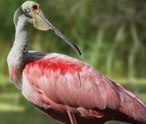
Roseate Spoonbill
The beautiful Roseate Spoonbill...read more








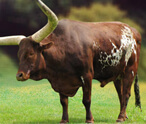

















Largest Birds of Prey in the World by Size and Weight
Also called raptors, the birds...
List of Birds That Fly in V Formation
Did you ever feast your eyes on the amazing phenomenon...
Birds of Prey List
A bird of prey is also known as a raptor or a hunter. It belongs to the group of...
Millipedes Vs Centipedes
Centipedes and millipedes are both arthropods from the group...
Difference Between Warm Blooded and Cold Blooded Animals
Every living organism...
Top 10 Extremely Dangerous Insects
The insects have been grouped in class 'insecta' of...
Sheep Vs Goat
The goat and the sheep are related to each other through the same family. They...
Animals with Blue-colored Blood
Humans and other vertebrates have red-colored blood running...
Birds, Mammals And Reptiles
Before coming to the question of common ancestry of birds...